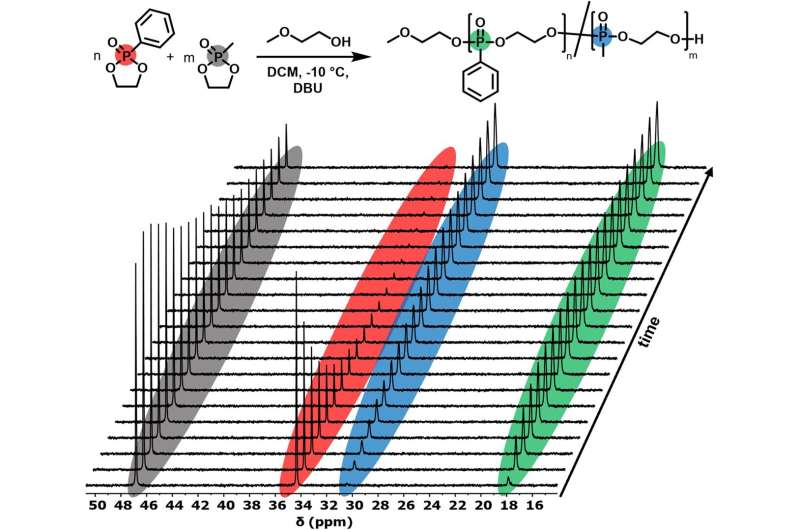This article has been reviewed according to Science X's editorial process and policies. Editors have highlighted the following attributes while ensuring the content's credibility:
fact-checked
peer-reviewed publication
trusted source
proofread
Researchers develop biodegradable polymers that are traceable without toxic contrast agents

Polyphosphoesters, molecules containing phosphorus as the central element, are easily traceable without the need for contrast agents, thanks to developments by researchers from the University of Twente (UT). Normally, these molecules display a similar molecular composition to our DNA, leading to considerable "noise" in the image.
The UT researchers provided a solution and developed unique polymers that are traceable with magnetic resonance imaging (MRI). Dr. Olga Koshkina, Project Leader in the Sustainable Polymer Chemistry Group, published this new concept of traceable polymers in Communications Chemistry.
The researchers adjusted the properties of polyphosphoesters (special polymers with a molecular structure inspired by DNA and RNA). As a result, the polymers acquired a different "MRI color," making them more distinguishable from the natural background. Additionally, they exhibit other physical MRI characteristics suitable for imaging.
For certain biomedical applications, polymers need to be traced within the body, a task typically accomplished through MRI. However, to effectively image body parts by MRI, toxic contrast agents are often required
MRI and MRI contrast agents
MRI is a radiation-free imaging technique routinely used in clinics today. Medical examinations using MRI typically require contrast agents. Current clinical contrast agents often alter the contrast of body water and tissues by employing paramagnetic heavy metals such as gadolinium to modify the signal from body water.
While efficient in imaging, the use of heavy metals raises concerns due to their accumulation in the body and the environment. Heteronuclear "hotspot" MRI does not require metals and directly detects other MRI-active elements. These elements serve as MRI dyes, creating a new color on an anatomical image.
Polymers in biomedical applications
Polymeric materials have enormous potential in medical applications, including the development of new therapies. However, to develop effective personalized treatments, it is crucial to track polymers in vivo. Until now, this was only possible with additional labeling, such as attaching radioactive tracers for nuclear imaging or fluorine-containing molecules (also called "PFAS") for "hotspot" MRI.
UT introduces a new concept, in which polymers can be tracked without a label, using directly the phosphorus signal in the polymer's molecular structure.
New possibilities
The research opens a new avenue for traceable and sustainable polymers with MRI. They can be used as new MRI agents, as drug delivery vehicles, or as biomaterials for tissue regeneration. The researchers at the University of Twente plan to conduct further fundamental research in this area and have opened up new possibilities for biodegradable, traceable polymers.
In addition, they are currently working on establishing a spin-off company to ensure that this groundbreaking research can be applied to real patients in the long term.
More information: Timo Rheinberger et al, Real-time 31P NMR reveals different gradient strengths in polyphosphoester copolymers as potential MRI-traceable nanomaterials, Communications Chemistry (2023). DOI: 10.1038/s42004-023-00954-x
Journal information: Communications Chemistry
Provided by University of Twente





















